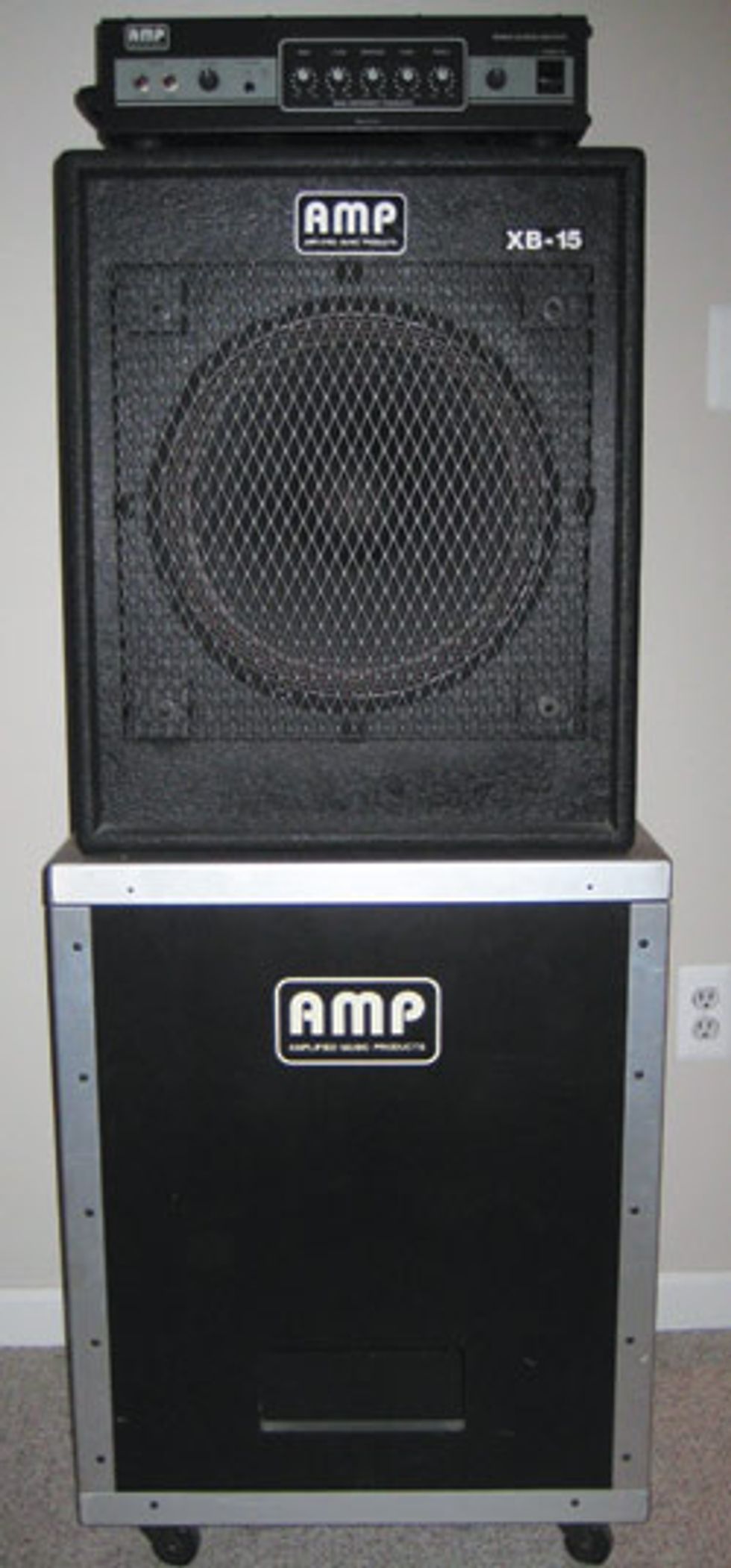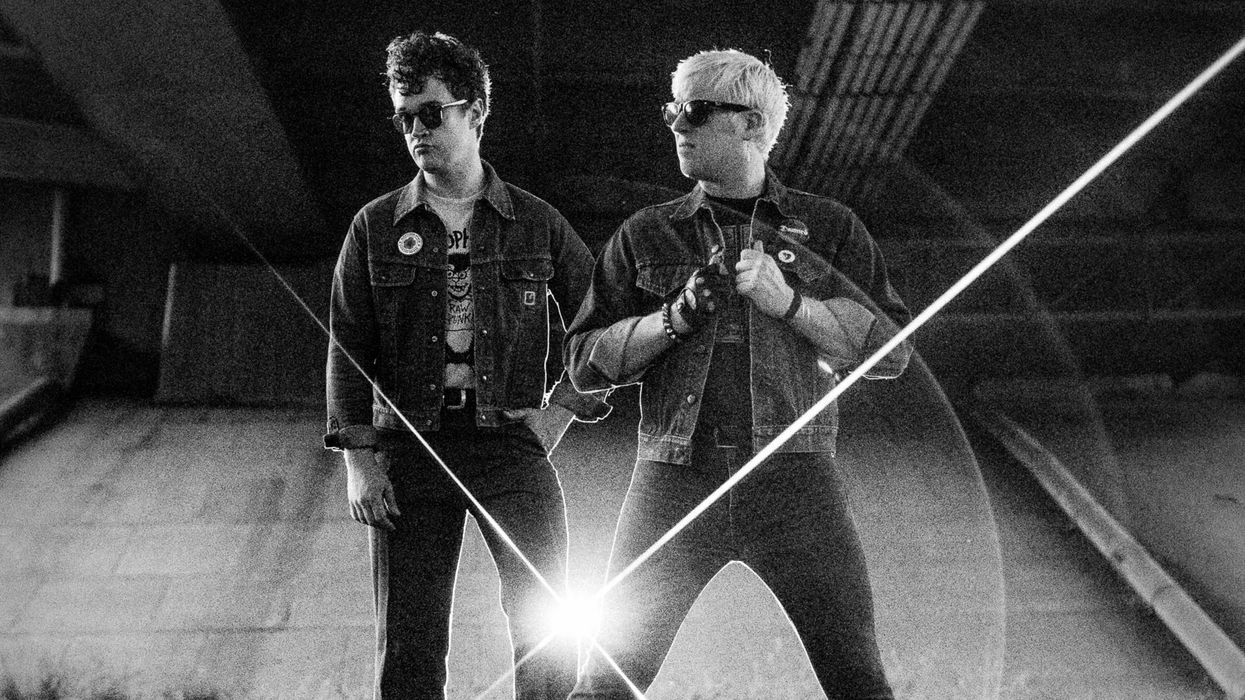Hey Zach,
I have an AMP BH-220 head and XB-15 speaker cabinet. I bought the rig in the ’80s and I’m the original owner, but I don’t know much about it and can’t seem to find anything significant searching online. A local music store found some initial information for me in your Blue Book of Guitar Amplifiers, but nothing about the value. I’m considering selling this rig, but have no idea what it’s worth. Can you help? Thanks!
—Neil Springer, Macomb, MI
Hi Neil,
You’re right—there isn’t much hard information out there about this amp. However, based on my research AMP brand amplifiers seem to have a cult-like status and a small, but loyal following. With the exception of a few original owner’s manuals and spec sheets, most of the history I found regarding AMP was on web forums.
According to California records, AMP (Amplified Music Products) was founded in 1981 in Chatsworth, California, with Russ Allee listed as president. Before AMP, Allee earned his reputation while working for the Acoustic Control Corporation, where he designed the Acoustic 360 and 370 series of bass amplifiers. After forming AMP, he had another former Acoustic Control Corporation employee, Steve Rabe, design the preamp for the AMP 420 bass heads.
Rabe left AMP around 1984 to start his own company, SWR Engineering, where he continued to develop and produce bass amplifiers. Allee stayed on with AMP until the company folded in 1988. Gibson reportedly bought AMP soon after, and began offering the “new” GB-440 bass amp that was nearly identical to the AMP Model 420. (While this is unverified, the story goes Allee either designed Gibson’s GB-440 or Gibson simply used Allee’s model 420 and called it the GB-440.)
Allee went on to work with David Nordschow of Eden Electronics to develop the Eden World Tour Series of bass amps. It’s no surprise that the AMP 420, SWR SM-400, Eden WT-800, and Gibson GB-440 are very similar in design and appearance—but most users agree that each amp sounds different, and each possesses varying pros and cons.
Your amp, the BH-220, is a variant of AMP’s original BH-420, but has less power and fewer features. Specifications include a 240- watt output at 4 Ω (150 watts at 8 Ω), solid-state preamp and power sections, a Volume control, a Tonal Balance control, an Enhance switch, two inputs, a power-amp input jack, two speaker outputs, a headphone jack, an effects loop, a 5-band EQ section, a balanced direct pre-EQ XLR jack, and a post-EQ line out. Your amp originally retailed for $599 and the BH-420 retailed for $799.
 The XB-15 has a unique
design that features a speaker
cabinet and protective carrying
case. While the speaker
cabinet sits inside the case for
travel, the cab rests on top of
the case when in use—and
the case actually becomes part
of the speaker cabinet. This
allows for “clean open E 40 Hz
fundamental notes unmasked
by overtones.” Specifications
include a 250-watt power rating
and an AMP 15B-8 15" speaker
with a 5 pound, 5 ounce magnet.
The original retail price for
the XB-15 was $699.
The XB-15 has a unique
design that features a speaker
cabinet and protective carrying
case. While the speaker
cabinet sits inside the case for
travel, the cab rests on top of
the case when in use—and
the case actually becomes part
of the speaker cabinet. This
allows for “clean open E 40 Hz
fundamental notes unmasked
by overtones.” Specifications
include a 250-watt power rating
and an AMP 15B-8 15" speaker
with a 5 pound, 5 ounce magnet.
The original retail price for
the XB-15 was $699.Most contributors in the online discussion forums agree that the AMPs are great sounding amplifiers, and are often given more accolades than their SWR and Eden counterparts. Construction and performance appear to be high quality, and I was hard-pressed to find a bad review. Based on this, these amps should be quite collectible and demand a premium in value, right?
Yes, the AMP bass amps are rare, but I often have to remind people that rarity should not be confused with desirability. A rare item seldom translates into more value or worth. AMP was unable to create any notoriety while in business (even though their products appear to be topnotch quality), meaning collectors did not take notice—most AMPs are or were used by players. Used values on AMP items generally appear to be between $200 and $300, regardless of model. And I would estimate the value of your rig to be between $450 and $600.
Even though AMP has a cult-like status and quality build, there just aren’t enough people interested in them, or enough amps in the market to create the demand that would drive up the value. I don’t set the values—I simply report on them from what I see in the market. For anyone who is looking for a great bass rig, consider this a steal. I absolutely consider this rig a treasure and one that few people know about. Unfortunately for the seller, he’ll probably feel like he’s getting cheated. But consider this: If no one out there is willing to pay what you feel an item is worth, is it really worth that much?
 Zachary R. Fjestad
is author of Blue Book of
Acoustic Guitars, Blue Book
of Electric Guitars, and Blue
Book of Guitar Amplifiers.
For more information, visit
bluebookinc.com or email
Zach at guitars@bluebookinc.com.
Zachary R. Fjestad
is author of Blue Book of
Acoustic Guitars, Blue Book
of Electric Guitars, and Blue
Book of Guitar Amplifiers.
For more information, visit
bluebookinc.com or email
Zach at guitars@bluebookinc.com.






![Rig Rundown: AFI [2025]](https://www.premierguitar.com/media-library/youtube.jpg?id=62064741&width=1245&height=700&quality=70&coordinates=0%2C0%2C0%2C0)












 Shop Scott's Rig
Shop Scott's Rig















































